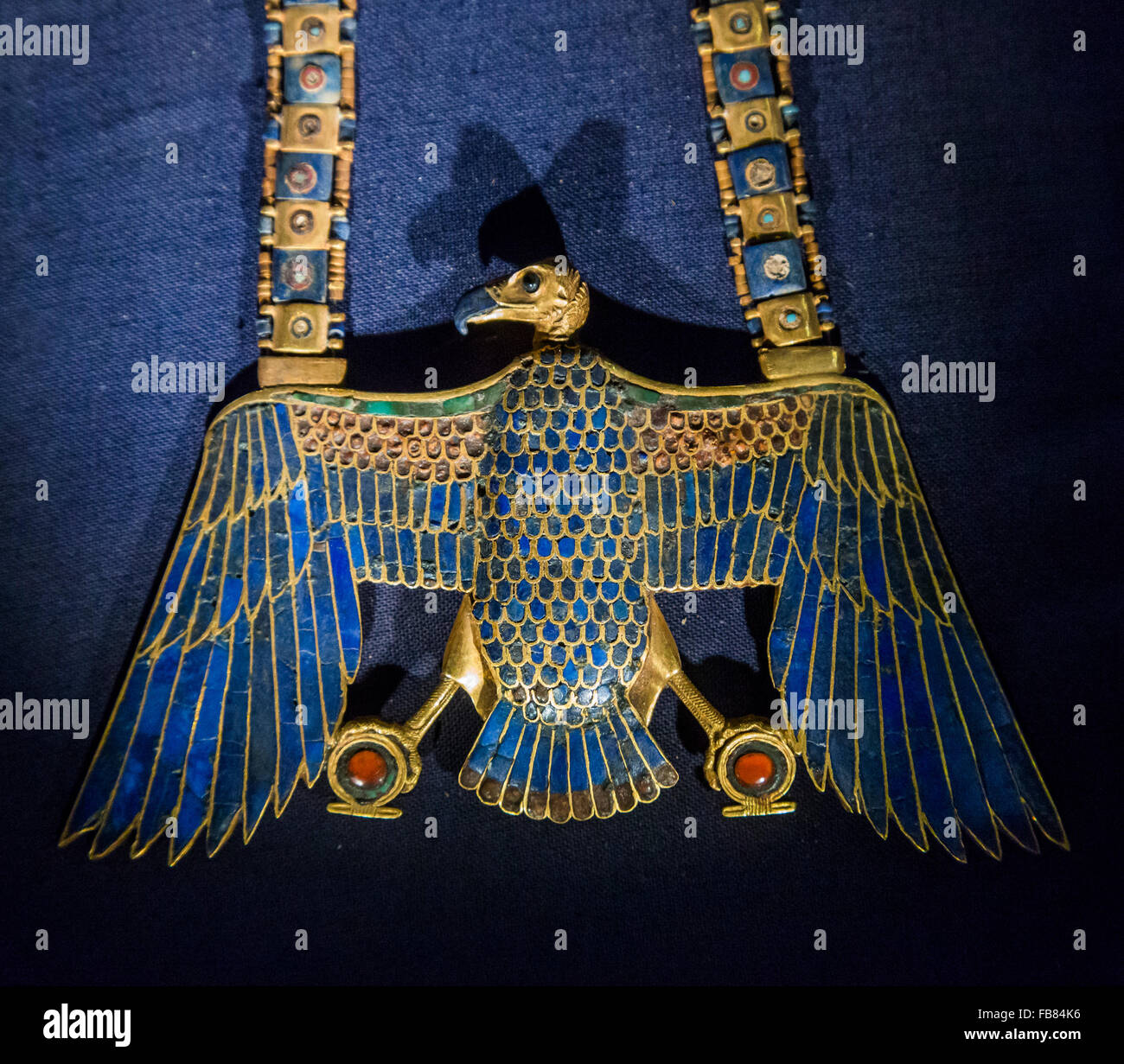Vulture Pendant from the tomb of Tutankhamun at the Egyptian Museum, Cairo, Egypt

Image details
Contributor:
B.O'Kane / Alamy Stock PhotoImage ID:
FB84K6File size:
25.7 MB (1.7 MB Compressed download)Releases:
Model - no | Property - noDo I need a release?Dimensions:
3200 x 2809 px | 27.1 x 23.8 cm | 10.7 x 9.4 inches | 300dpiDate taken:
18 December 2015Location:
The Egyptian Museum, Cairo, EgyptMore information:
The innermost layers of Tutankhamun's mummy wrappings contained his personal possessions. This necklace was suspended from his neck in the eleventh or twelfth layer, close to the mummy, and therefore very probably it was a piece that he had worn during his lifetime. The pendant consist of a representation of the vulture-goddess of Upper Egypt, Nekhbet, with the outer ends of the wings folded downwards resembling a cloak. It is made of solid gold encrusted on the obverse with blue glass, apart from the lesser coverts of the wings, which are encrusted with red glass edged with green, and the tips of the tail feathers, which are also encrusted with red glass. In its talons it holds the hieroglyphic shen sign, inlaid with carnelian and blue glass. Tutankhamun alternatively spelled with Tutenkh-, -amen, -amon) was an Egyptian pharaoh of the 18th dynasty (ruled ca. 1332–1323 BC in the conventional chronology), during the period of Egyptian history known as the New Kingdom. He is colloquially referred to as King Tut. His original name, Tutankhaten, means "Living Image of Aten", while Tutankhamun means "Living Image of Amun". In hieroglyphs, the name Tutankhamun was typically written Amen-tut-ankh, because of a scribal custom that placed a divine name at the beginning of a phrase to show appropriate reverence. If Tutankhamun is the world's best known pharaoh, it is largely because his tomb is among the best preserved, and his image and associated artifacts the most-exhibited. As Jon Manchip White writes, in his foreword to the 1977 edition of Carter's The Discovery of the Tomb of Tutankhamun, "The pharaoh who in life was one of the least esteemed of Egypt's Pharoahs has become in death the most renowned." 5, 398 items were found in the tomb, including a solid gold coffin, face mask, thrones, archery bows, food, wine, sandals and fresh linen underwear. Howard Carter took 10 years to catalog the items.